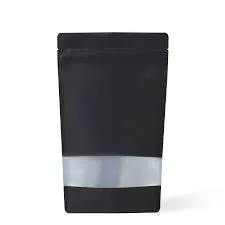- Afrikaans
- Albanian
- Amharic
- Arabic
- Armenian
- Azerbaijani
- Basque
- Belarusian
- Bengali
- Bosnian
- Bulgarian
- Catalan
- Cebuano
- chinese_simplified
- chinese_traditional
- Corsican
- Croatian
- Czech
- Danish
- Dutch
- English
- Esperanto
- Estonian
- Finnish
- French
- Frisian
- Galician
- Georgian
- German
- Greek
- Gujarati
- haitian_creole
- hausa
- hawaiian
- Hebrew
- Hindi
- Miao
- Hungarian
- Icelandic
- igbo
- Indonesian
- irish
- Italian
- Japanese
- Javanese
- Kannada
- kazakh
- Khmer
- Rwandese
- Korean
- Kurdish
- Kyrgyz
- Lao
- Latin
- Latvian
- Lithuanian
- Luxembourgish
- Macedonian
- Malgashi
- Malay
- Malayalam
- Maltese
- Maori
- Marathi
- Mongolian
- Myanmar
- Nepali
- Norwegian
- Norwegian
- Occitan
- Pashto
- Persian
- Polish
- Portuguese
- Punjabi
- Romanian
- Russian
- Samoan
- scottish-gaelic
- Serbian
- Sesotho
- Shona
- Sindhi
- Sinhala
- Slovak
- Slovenian
- Somali
- Spanish
- Sundanese
- Swahili
- Swedish
- Tagalog
- Tajik
- Tamil
- Tatar
- Telugu
- Thai
- Turkish
- Turkmen
- Ukrainian
- Urdu
- Uighur
- Uzbek
- Vietnamese
- Welsh
- Bantu
- Yiddish
- Yoruba
- Zulu
how long does silica packets last
How Long Do Silica Gel Packets Last? Understanding Their Longevity and Effectiveness
Silica gel packets are ubiquitous in various packaging, from shoeboxes to electronics. Their primary purpose is to control humidity and prevent moisture damage. While consumers often see these small packets with the warning Do not eat, many wonder about their longevity and effectiveness in absorbing moisture over time. This article explores how long silica gel packets last and offers insights into their usage and storage.
The Purpose of Silica Gel Packets
Silica gel is composed of silicon dioxide, which is a porous material that can absorb moisture from its surroundings. Manufacturers include silica gel packets in product packaging to safeguard items from dampness, which can lead to mold, mildew, and deterioration. Whether protecting leather goods, electronics, or food products, these packets serve as a simple and effective moisture control solution.
How Long Do Silica Packets Last?
One of the most common questions surrounding silica gel packets is their shelf life. The lifespan of a silica gel packet depends on several factors, including its storage conditions, the amount of moisture in the air, and whether the packet has been used previously. Generally, silica gel can absorb a significant amount of moisture before reaching its saturation point. This typically occurs after absorbing approximately 30% of its weight in water.
After being saturated, silica gel packets lose their effectiveness. However, they do not have a definite expiration date; instead, their ability to absorb moisture diminishes over time. When well-stored and used in low-humidity environments, silica gel packets can continue to function effectively for several years. If they become saturated, they can often be recharged by heating them in an oven, typically at around 250°F (121°C) for a couple of hours, which drives out the absorbed moisture and revitalizes their absorptive capabilities.
Factors Affecting Longevity
Several factors influence how long silica gel packets last
1. Humidity Levels The higher the humidity in the surrounding environment, the faster the silica gel packets will saturate. In very humid conditions, these packets may become full within a few weeks.
how long does silica packets last

2. Original Packaging Silica gel can include various formulations (such as indicating silica gel, which changes color when full) that may affect how long they last. Some formulations are more effective in high humidity than others.
3. Airflow Proper airflow can help maintain the effectiveness of silica gel packets. When placed in a closed container or an environment with poor ventilation, the packets may saturate more quickly.
How to Determine When to Replace or Recharge Silica Gel Packets
Users often need to determine when a silica gel packet is no longer effective. The most straightforward way is to observe the color if using indicating silica gel. When the color changes (usually from blue to pink or orange to green), it indicates that the packet is saturated. If using non-indicating packets, they may need to be replaced based on usage duration or through visual inspection.
Best Practices for Storage and Use
To maximize the effectiveness and lifespan of silica gel packets, consider the following best practices
- Store in a Cool, Dry Place Keep silica gel packets in low humidity areas to prolong their life. - Avoid Prolonged Exposure to Air Seal them in airtight containers if not in use to prevent moisture absorption. - Recharge When Possible Follow the recharging process by heating them periodically, especially after extended use in humid environments.
Conclusion
Silica gel packets can be an invaluable asset in protecting various goods from moisture damage. While they do not have a definitive shelf life, their effectiveness can last for years depending on environmental factors and usage. By understanding how to maintain and recharge these packets, consumers can ensure their possessions remain safe from the harmful effects of humidity. Knowledge about silica gel packets empowers individuals to make informed decisions about their use and storage, ultimately extending their functionality and lifespan.













